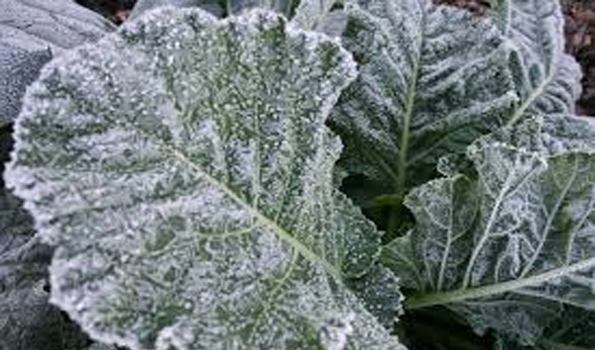Be Prepared To Protect Your Landscape From Frost
Plants, Unique Companies, Unique Custom Pools

As cool weather approaches, it’s important to remember that not all of your plants are going to fair well at freezing or near freezing temperatures. And taking a few minutes to prepare for the cool nights to come could save you a great deal of frustration and money. You invested a lot of money in your landscaping so consider one more small investment to be an insurance policy against the cold.
Nothing is worse than waking up to see black leaves on your delicate tropical plants that thrived in the sweltering Phoenix heat all summer. And without the proper protective material that is exactly what you will find the morning after the first frost or cold night of the year. But saving you delicate palms, hibiscus and other warm climate plants can be as simple as taking a few minutes to tuck them in at night under some proper breathable materials.
Frost is not something that we deal with on a regular basis in the valley, so it is easy to forget to prepare for those cold evenings. And when a late-night weather forecast reminds us to take action, we frantically pulling out old plastic tarps and any other large materials we can find to cover plants. Sadly, plastic materials such as the common tarp from a big box store are not going to help. Plastics do not breath but instead trap the cold near the plant and create even worse frost damage. Fabrics such as old paint drop clothes or bed sheets work the best as they are lightweight and allow air to circulate. The cover also needs to be large enough to reach the ground so that the radiant heat from the soil can help to keep the plant warm and frost free.
If you do not have adequate material to cover your delicate plants, consider stopping by a big box store or a lawn and garden store to purchase blanket material made specifically to protect plants from frost damage. For exceptionally cold nights or extremely delicate plants, you could also run an extension cord to the plant and mount an outdoor approved light fixture with a 100 watt light bulb near the base of the plant. The spotlight fixtures with a spike on the base work well and can be found in the holiday lighting section at many stores. This will add warmth under the blanket and help to keep the plant from freezing. But be certain that no part of the plant material is touching the bulb or the light fixture as that could cause burns.
Thinking about cool weather is also important when you are planning your landscape. Rosemary, Euonymus, Iris, Little John Bottle Brush, Japanese Privet, Pittosporum, and decorative grasses are all good choices which will weather cooler temperatures as well as the summer heat of Phoenix. Also, consider the location of more delicate plants when creating your landscape. Plants near the foundation of a stucco home or near a masonry wall will benefit from the radiant heat of the masonry and be less likely to frost. Also, plants placed with western and southern exposure will benefit from more sun and a slightly warmer environment.
Planning plant locations, understanding which plants are more delicate and having a few appropriate sheets of breathable material to use as plant blankets will all ensure that your landscape remains healthy and beautiful even after the few cold nights this winter.